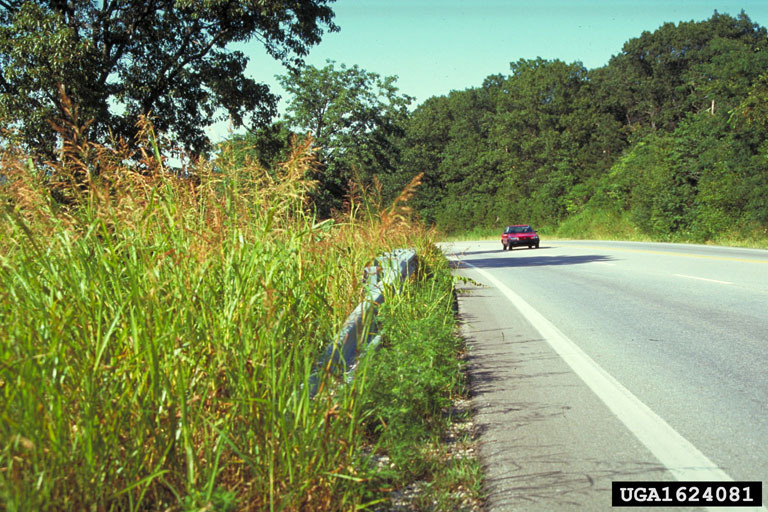|
Having trouble viewing this email? View it as a Web page.
May 1, 2023
May Weed of the Month: Johnsongrass
Johnsongrass is a tall perennial grass that grows up to 8 feet and can cause millions of dollars of lost agricultural revenue
Emilie Justen, Minnesota Department of Agriculture
In January, the Minnesota Department of Agriculture (MDA) added Johnsongrass (Sorghum halepense) to the Prohibited Eradicate Noxious Weed List. Johnsongrass is a tall perennial grass that grows up to 8 feet and can cause millions of dollars of lost agricultural revenue. It was first introduced into the United States as a forage crop in the early 1800s.
Johnsongrass prefers full sun and disturbed soil and can tolerate a variety of habitats. Johnsongrass grows in pastures, roadsides, ditches, abandoned lots, and waste areas. It spreads vegetatively by rhizomes, growing vigorously up to 60 feet in a single year. It produces large quantities of seed that are moved by humans, animals, and water.
Johnsongrass has several identifiable characteristics; each leaf grows up to 8 feet long and has a distinct white midrib down the center of the leaf. The stems of the plant are hairless. Johnsongrass flowers occur in loose, spreading, purplish panicles. The panicles produce small seeds enclosed in spikelets.
 Infestation of Johnsongrass along a roadway.
Click here to download the photo.
Because Johnsongrass is adapted to a wide variety of habitats, it is challenging to manage. It spreads aggressively, forming dense colonies which displace native vegetation and suppress other plant species. For the agricultural industry, Johnsongrass infestations can significantly reduce soybean and corn yields if not properly managed.
Johnsongrass produces toxic amounts of cyanide if grown under stressful conditions like extreme heat, cold, and drought. Levels of cyanide can accumulate within the plant and become toxic to livestock when ingested. It also can accumulate excess nitrogen from the soil, causing potential nitrate poisoning in sheep and cattle if ingested.
Since Johnsongrass is not known to be present in Minnesota, early identification and treatment of any newly discovered infestations are the keys to managing it. For small populations, mechanical removal of the whole plant and root system may be effective. Exposing the rhizome to extreme heat or cold can also effectively kill the rhizomes. Herbicide treatments are also an option; please contact your local University of Minnesota Extension office for herbicide recommendations.
Report suspected Johnsongrass infestations to the MDA’s Report a Pest online form. For more information on the plant, visit the MDA’s plant species page.
MEDIA: For more information on Weed of the Month, contact Brittany Raveill, MDA Communications, at brittany.raveill@state.mn.us or 651-201-6131
|